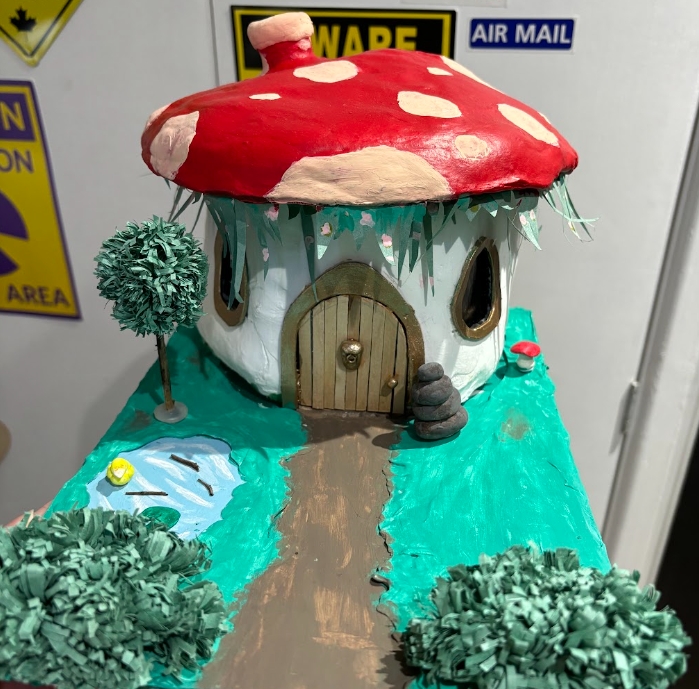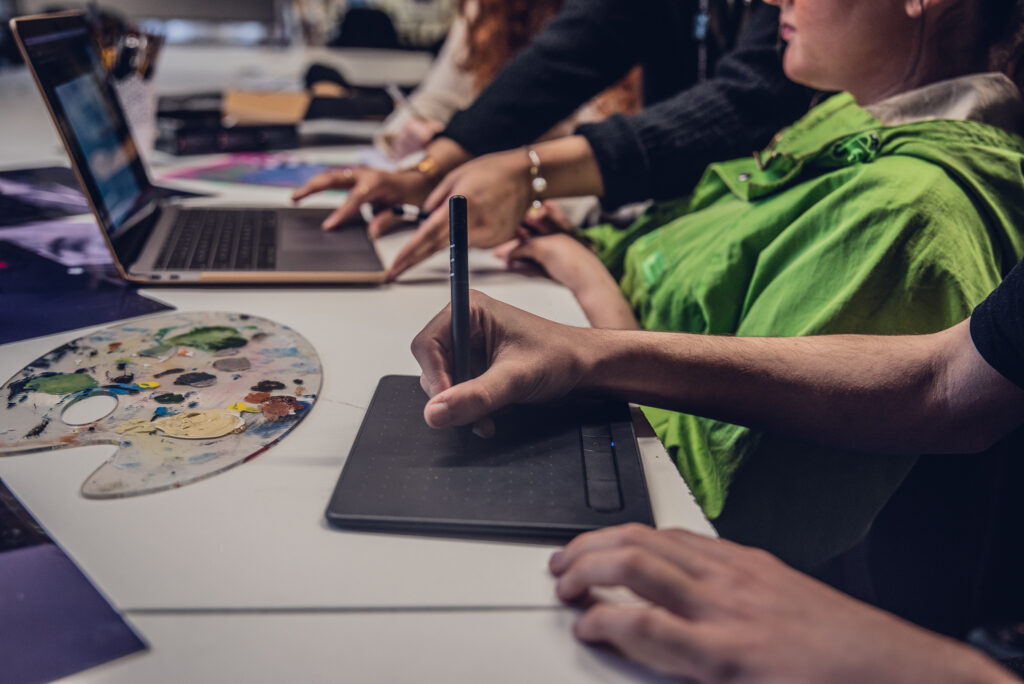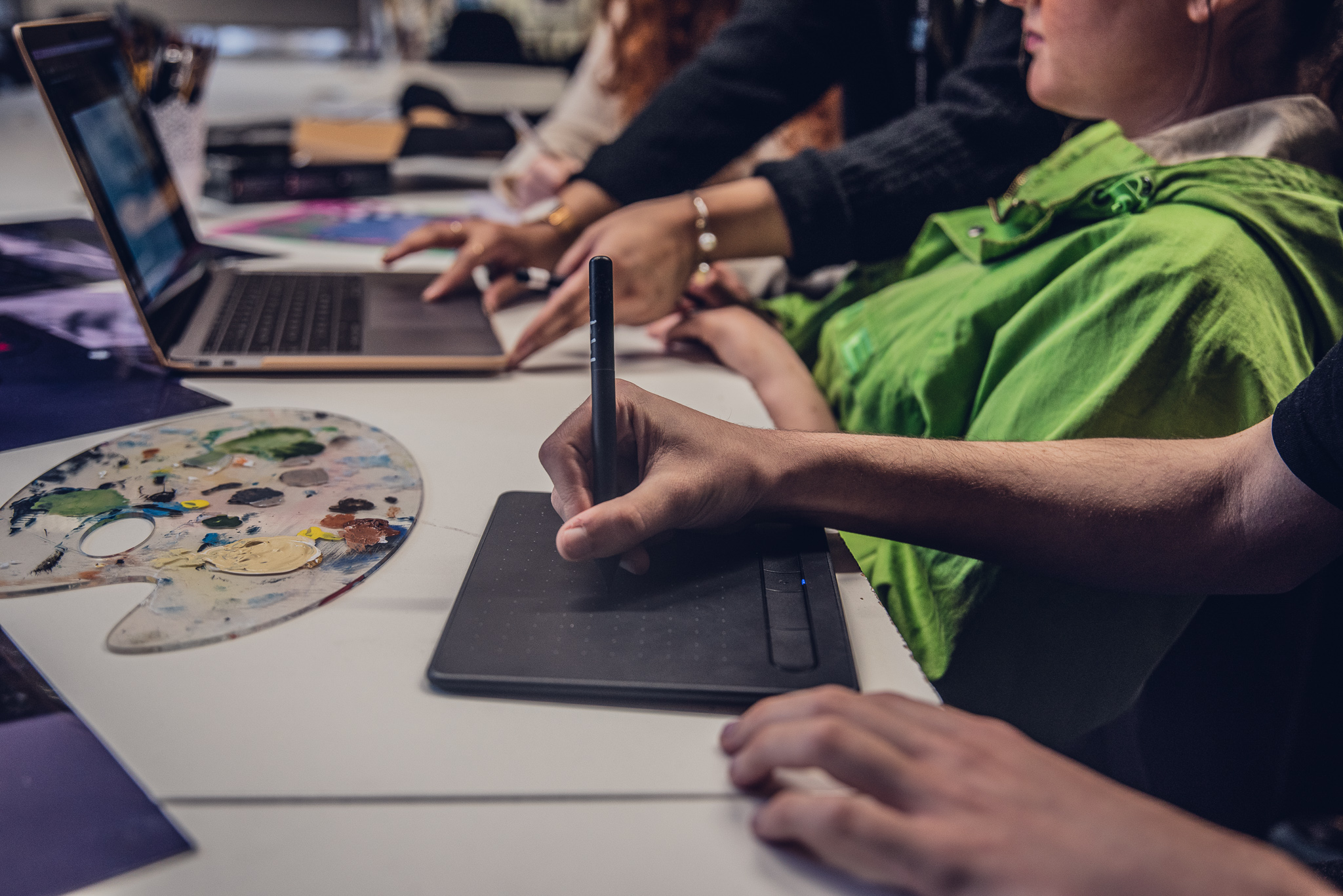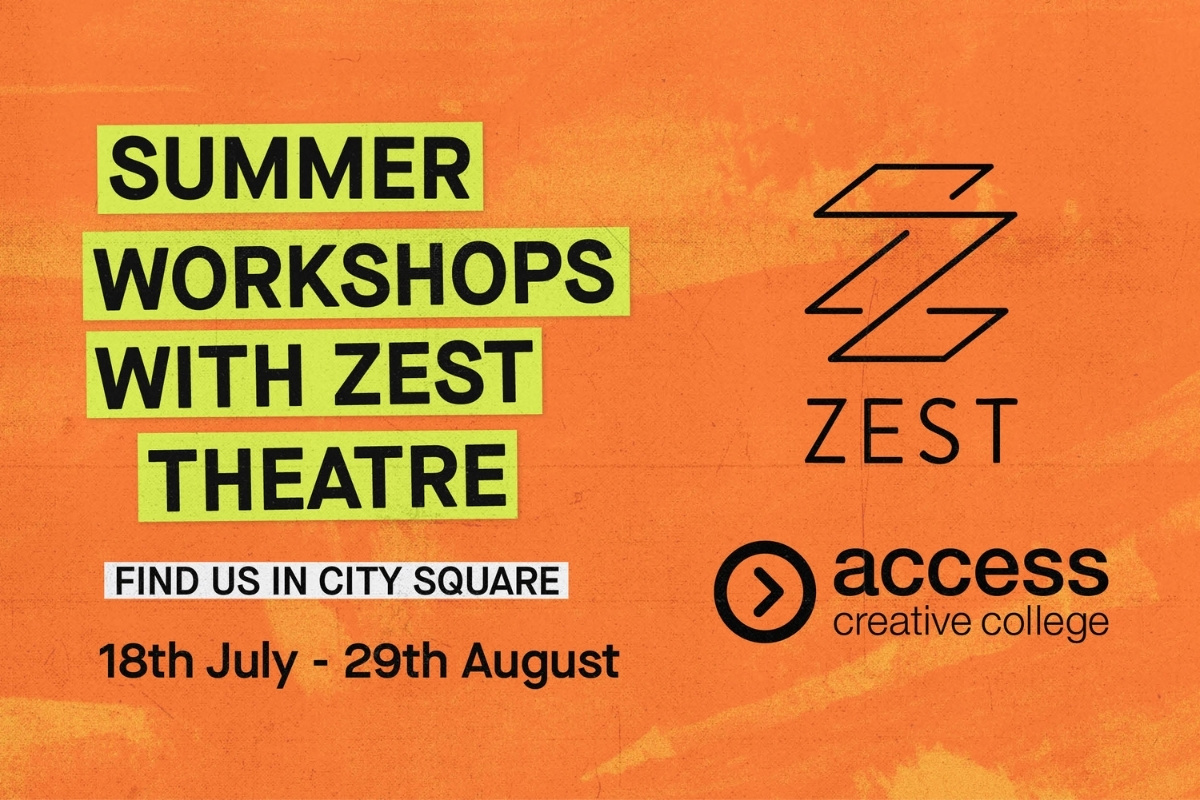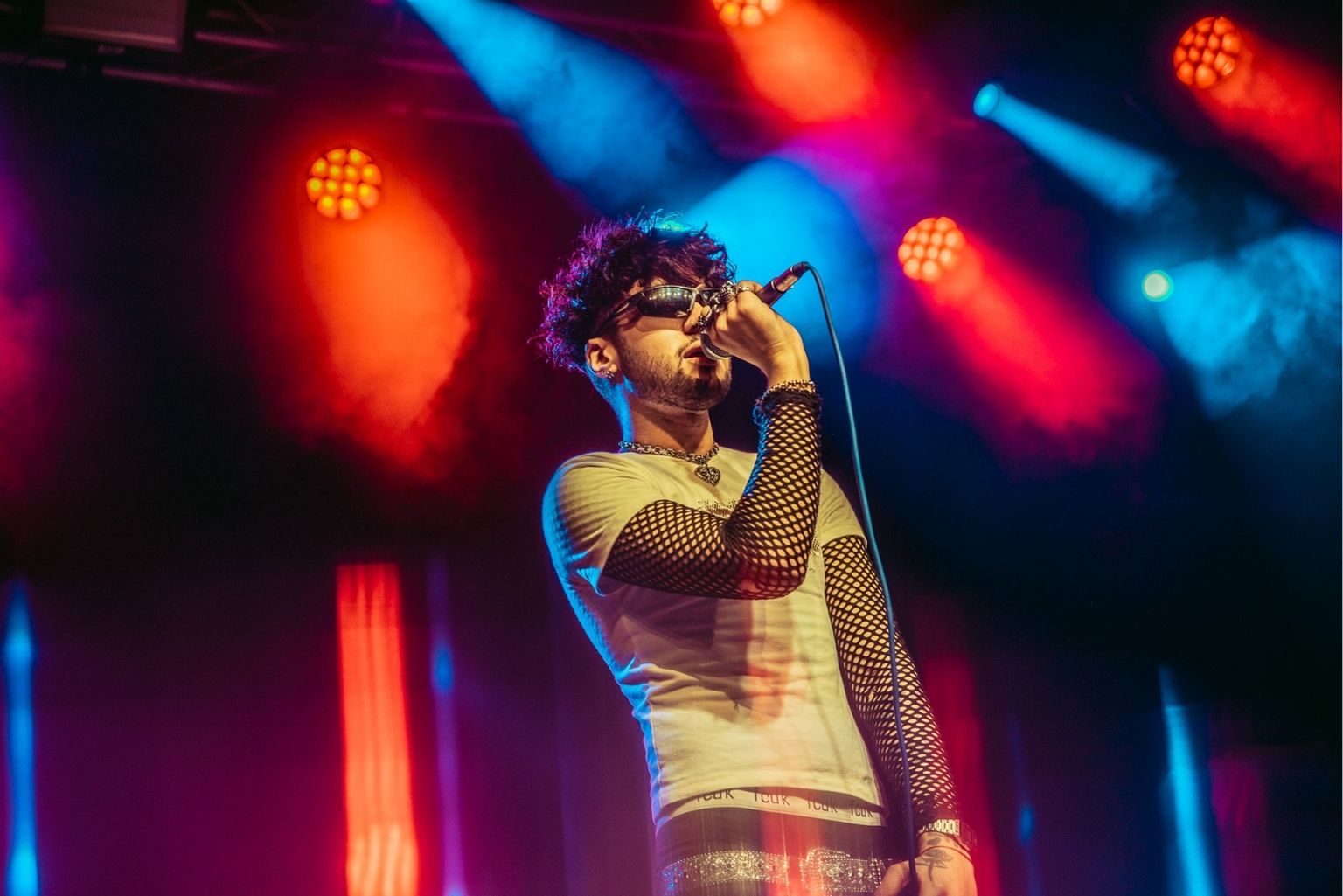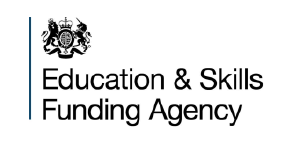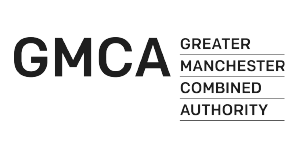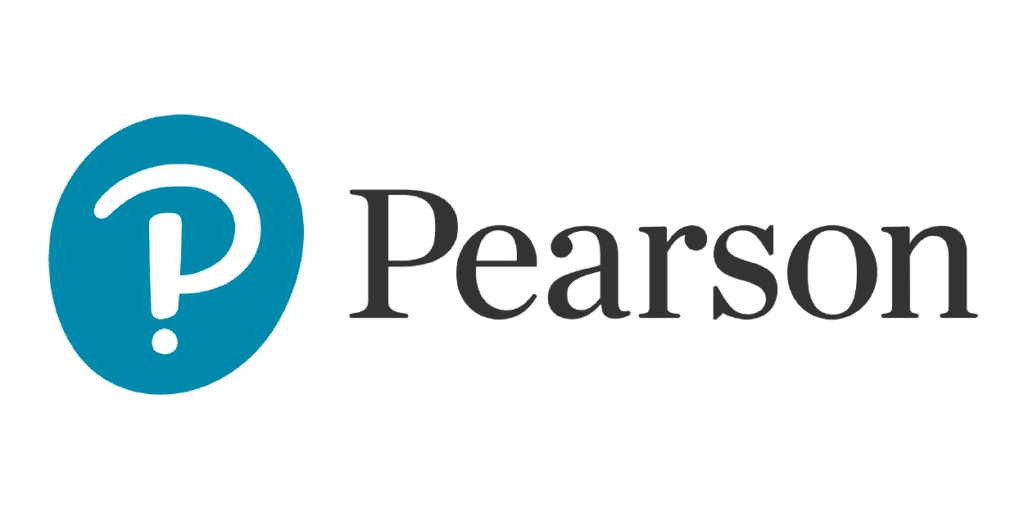Meet Lillie, one of our second year students on Animation and VFX at ACC Norwich, forging a path in model making. Below, Lillie discusses their process, material decisions, inspirations and what they hope to do once they finish at ACC. Read on for more!
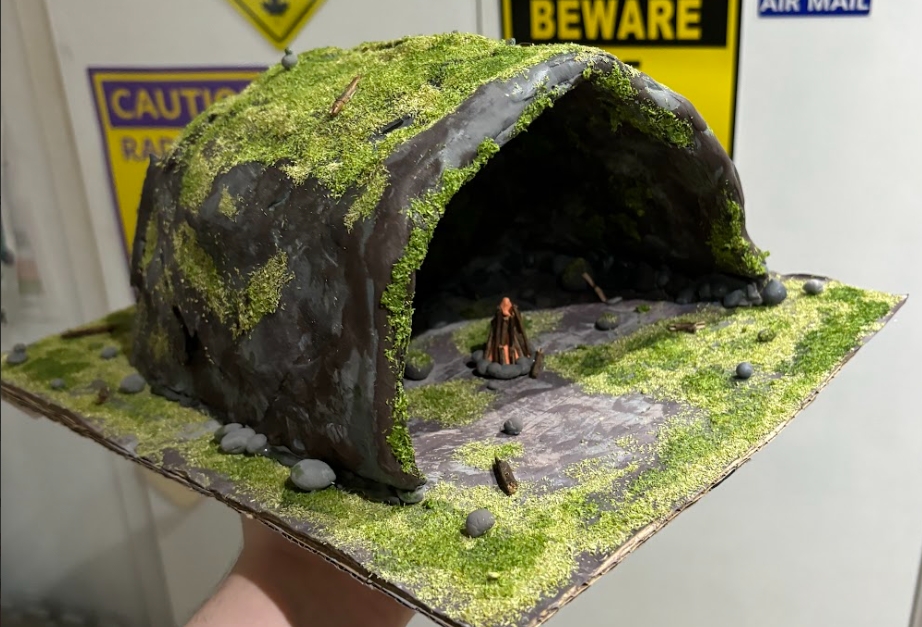
Tell us about your background and where your interest in animation, VFX and modelling came from
I started making props and accessories for costumes in 2020, just learning the basics. In around mid 2022, I lost interest in that hobby and didn’t make anything for a while, and it was only when I joined Access that I became interested in modelling again. I had a workshop session with tutor James Colk, and he suggested that we use the time to make physical pieces of work and bits of animation for the end of year exhibition. I knew immediately that I wanted to make a scene, and I found that my previous prop making experience meant I already knew the basics of model making. I decided to challenge myself to make a house shaped like a mushroom. I really enjoyed making the piece and it reignited my passion for modelling.
What is your process when approaching a project?
My modelling process is simple. I start off by thinking of an idea and coming up with a rough sketch of what I want to achieve. I don’t plan out my models as well as I probably should, instead opting to just work from the reference, making the base shape for my project out of cardboard. This helps block out the shape and gives it more structural integrity.
I then use foam clay or modelling foam to go over the cardboard and help develop the shape more because it’s easier to mould. I always find I can get the shape I want with that method. The reason why I recommend using foam clay instead of regular air dry clay is because it’s a lot lighter, making it easier to transport. I also find it easier to fix if I make a mistake and the finished texture looks nicer.
Then comes painting. I usually use acrylic paint and watercolours – the acrylic paint is for the base colour and watercolours are good for adding detail and texture. As an example of this, the browning on the pancakes in the image below was done with watercolours. Then depending on the project requirements, I’ll make some other assets using the same process and put it on a base, usually a piece of painted cardboard.
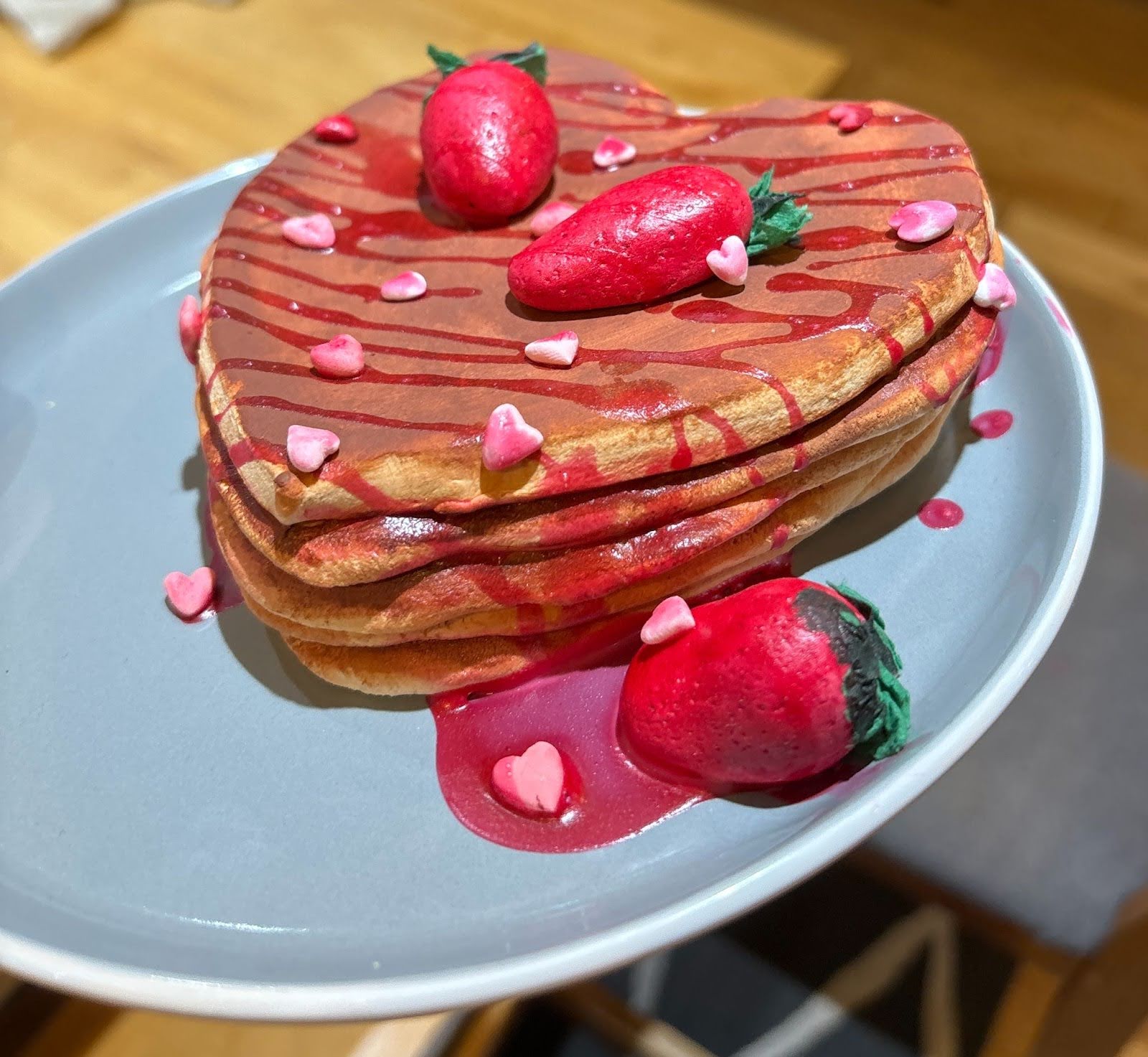
When creating art, unexpected things are going to happen, or things won’t turn out the way you want. When that happens, I find taking a few moments away from it and then reassessing helps me. When model-making, things always look different when dry, so coming back when you can actually see the end result more clearly is important. I don’t actually count my work as done until a week after I’ve completed it, so I can reassess it and see if there are any problems or improvements that could be made.
Can you share some examples of specific people or works that inspire you and discuss how you use that inspiration?
The first model I did, the mushroom house in the image below, originally used little props that I brought, but I wasn’t happy with them. Everything was out of scale and looked cheap, so I replaced them with handmade plants that I made from paper and sticks. Even though it was the first project I started, I still don’t count it as finished as there’s always things that can be improved.
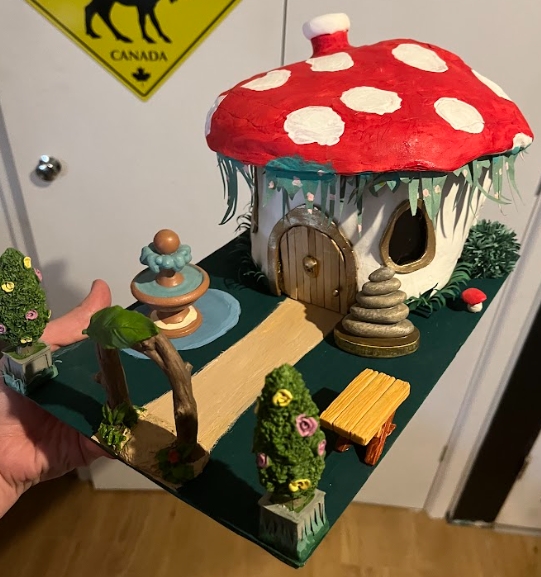
What are the challenges in your work and how do you overcome them?
I’m currently in the process of making my first character, which is proving to be quite challenging. I started by making a frame out of wire that forms the character’s bones. It gives them structural integrity and the wire used makes them poseable. I then wrapped it in string in order to bulk the character out.
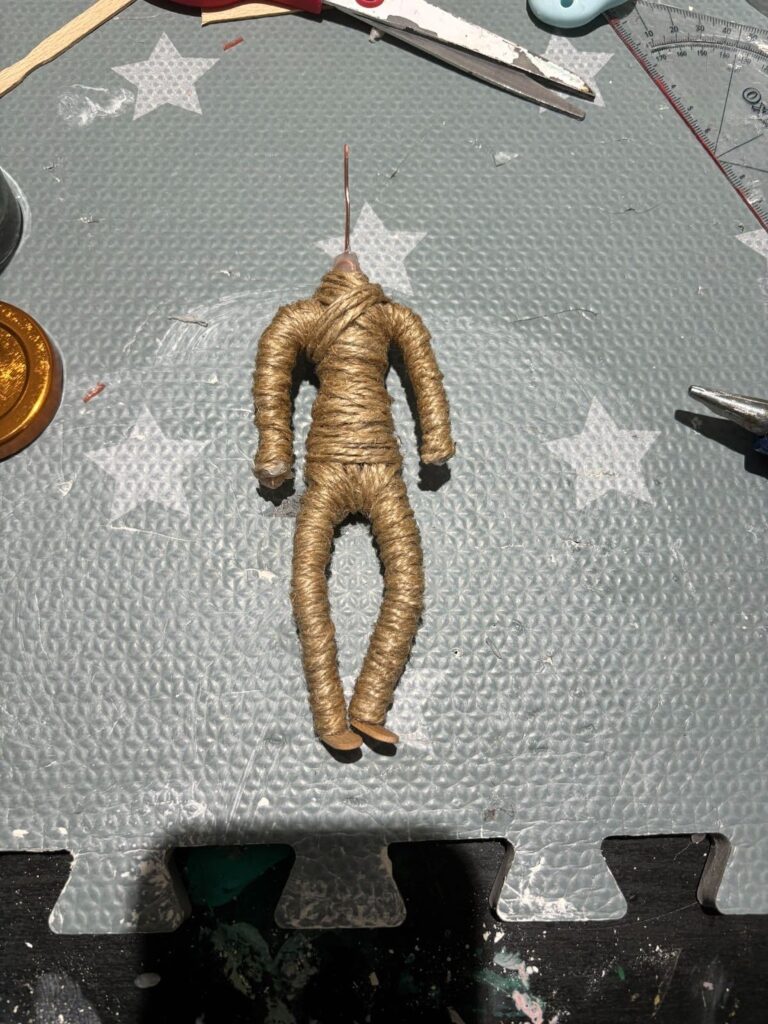
I’m planning to make the head out of a foam ball and air dry clay. Doing the whole head in air dry clay would make it too heavy, so the foam is needed to ensure the head stays in place. Clay, although not my preferred medium, is really good for minute details such as hair which is needed for eyebrows. I think I will do a similar thing with the hands and feet as well. For the hair I plan to use yarn, and I’m going to use fabric for the character clothes which will hopefully cover all the string, so the character looks less voodoo doll-like.
What are you aiming for after college?
After college I plan to go to university to study animation, so I can further improve the skills I’ve learned at college and maybe try out different mediums like stop motion. That’s really exciting to me, as it means my models would no longer be just models – they could be a background in a scene, or maybe even a character.
If you’re feeling inspired by Lillie’s journey, we’re still accepting applications for this September for our Level 3 Animation and VFX. Read more and apply online.
